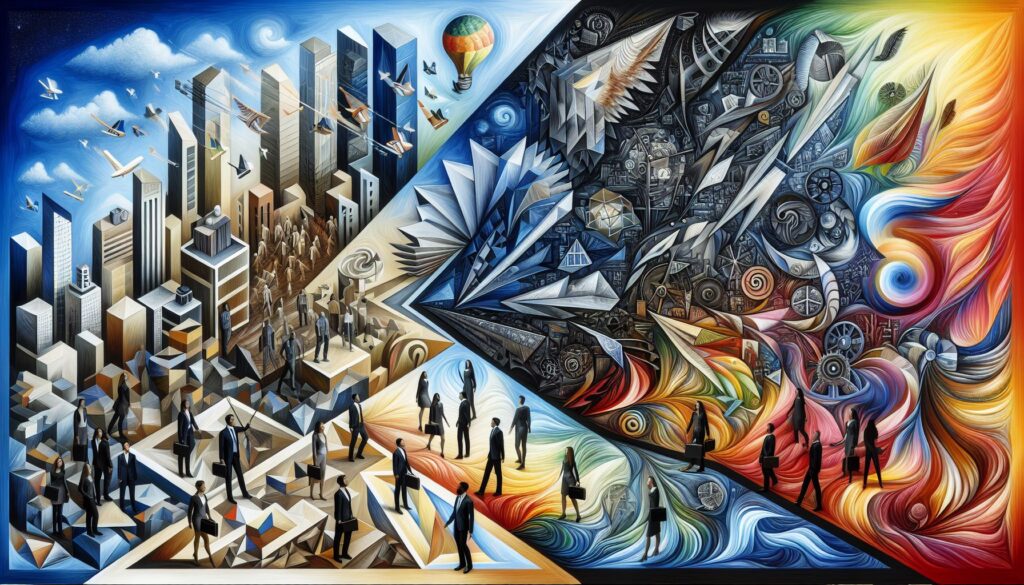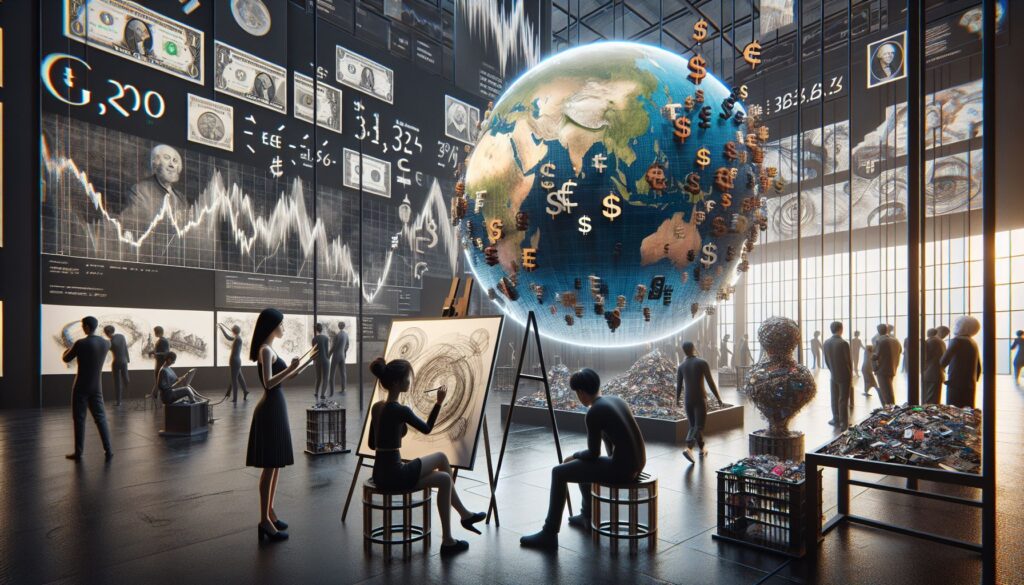Immerse yourself in the vibrantly hued strands of the contemporary art scene – a realm pulsating with creativity, fueling a global aesthetic revolution. Today, robust entrepreneurial ventures and innovative market strategies are reshaping the traditional contours of this domain, ushering in an era defined by risk-taking, novel revenue streams and technological synergy. This post dives into the heart of this transformative journey, celebrating the art world as an avant-garde fortress of commerce and culture.
The Artistic Vanguard: Culture Meets Commerce
In the bustling tapestry of today’s art sphere, traditional techniques coalesce with modern practices, meeting at the intersection of artistic aesthetics and commercial viability. From curated online galleries to pop-up exhibitions to non-fungible tokens (NFT) art sales, numerous lucrative avenues have emerged, dissolving the traditional barriers of art accessibility, democratizing its consumption, and broadening its appeal to versatile demographics.
Prominent in this cascade of change has been the flourishing market for NFTs. Artists now create unique digital art pieces, tokenizing them to be sold virtually, with the ownership rights recorded on an incorruptible ledger – the blockchain. This has made it possible to assign a tangible value to digital art, an outcome that seemed farfetched just a few years ago.
While digital art sales offer immediate profits, the art as an asset class phenomenon also gained prominence. Thematic funds are investing in art pieces with potential long-term value, and they’re not just purchasing expensive masterpieces but acquiring stakes in up-and-coming artists’ creations. This provides artists with a financial cushion and supporters with long-term revenue and a tangible connection to the art world’s future stars.
Future Strokes: Picturing the Art Market’s Trajectory
Visualizing the future of the art business involves anticipating shifts in conventional business practices. The intermingling of art, technology, and entrepreneurial endeavors has already set the stage for this evolution. What remains now is to harness the potential of this nexus and design sculpted strategies to capitalize on these innovative trends.
AI might play a pivotal role in shaping this future landscape. Since accuracy and speed are prerequisites in today’s agile market scenarios, AI-driven valuation could be a game-changer, introducing efficiency in art sales and auctions. By analyzing data sets of previous art sales, AI could predict future price trends, preventing underquoting or overpricing art pieces.
Art leasing is another trend that might gain traction. Similar to owning shares in an artist’s future growth or renting designer clothes, art leasing could become a norm, facilitating art’s accessibility without the burden of purchasing outright. Further, it would provide artists with a more predictable and consistent income stream.
Additionally, the sphere of crowd-funded art may witness expansion. Just like startups lever their ideas to gain investments, artists might pitch their potential projects to art enthusiasts and investors. This methodology could open the doors to a democratically funded art world, where power shifts from a few high-profile patrons and galleries to an array of small investors.
Wrapping up, the budding amalgamation of artistry and entrepreneurship promises an exciting future, one where creativity meets capital, and innovation fuels commercial growth. By actively embracing shifting dynamics, the art world might set a revolutionary example, not just for other business domains, but for cultures worldwide. This interplay of economic and creative strategies underpins the art world of tomorrow: a panorama of avant-garde ventures reshaping the business blueprint eternally.




